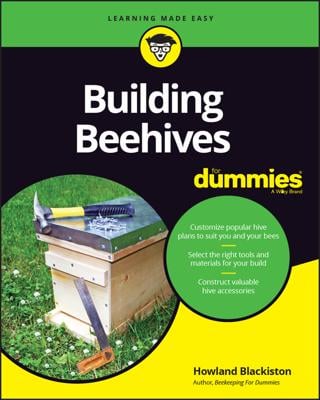Raising genetically strong queens that produce healthy colonies can help you avoid the multitude of worries and problems currently facing honey bees. Robust colonies are resistant to pests, chemicals, and diseases. The Miller Method is a queen-rearing process that requires no special equipment and is perfect for the backyard beekeeper who just wants to raise a few queens.
Here’s how it works:
First, take a deep frame with wax foundation and cut the bottom edge of the foundation into a saw tooth pattern.
Place the frame with the “saw tooth” foundation in the center of your queen mother colony (the strongest, hardiest, most productive and gentlest).
Let the bees draw it out into comb. Consider feeding the colony some syrup to get them making wax.
After a week, have a peek every few days. At some point, the queen will start laying eggs in this new comb.
When the cells along the saw-toothed margins have eggs, it’s time to set up a queenless nuc that will build and raise the queen cells.
The day after setting up the queenless nuc, insert the saw-tooth frame of eggs into the center.
Overnight the bees will have become very aware that they have no queen. They will be ever-so-ready to receive a frame containing just what they need to raise some queens: eggs. If all goes well, the bees will build a number of queen cells along the jagged edge.
In a week’s time, have a look and see what the bees have made.
Hopefully, the bees will have built several queen cells in different spots along the jagged edge.
In a few more days, come back and see how the queen cells are developing. Later, you will separate them by cutting them apart.
Make up an additional queenless nuc for each queen cell (or clumps of cells) that you saw in Step 5.
A few days before the queens are due to emerge, go back and remove the frame containing the queen cells.
Cut the cells apart carefully to put into the waiting queenless nucs. When you cut the comb, take plenty of comb around each cell or clump of cells — give yourself a hefty handle, even if it means cutting into other brood cells. Don’t dent or deform the queen cell in the least little bit — the developing queen inside is extremely fragile. Also, don’t tip the cells or jostle them, for the same reason.
Be sure to move those queen cells to the queenless nucs before the queens emerge. If you don’t, the first queen to emerge will kill all the other queens she can find.
Distribute the queen cells to the queenless nucs.
Remove a central frame from each queenless nuc and carefully press the comb handle attached to the cells into the comb of this frame. Be very careful as you slide the frame back into the hive. Not denting the queen cell is of paramount importance.
A day or two after “emergence day” (16 days after the egg was laid), check to see that each queen did emerge from her cell.
You’ll see the queen cell with a round opening on the bottom. You might be able to find her walking around on one of the frames. If you don’t find her, don’t worry. A virgin emerging from a cell into a queenless colony is very likely to be accepted.
Bees found on frames of open brood (not capped) are typically nurse bees. You can ensure that your queenless nuc has lots of nurse bees by shaking or brushing the bees off frames of open brood and into your queenless nuc. Just make sure you don’t shake off or brush a queen into the nuc! Return the brood frame to the colony it came from.

